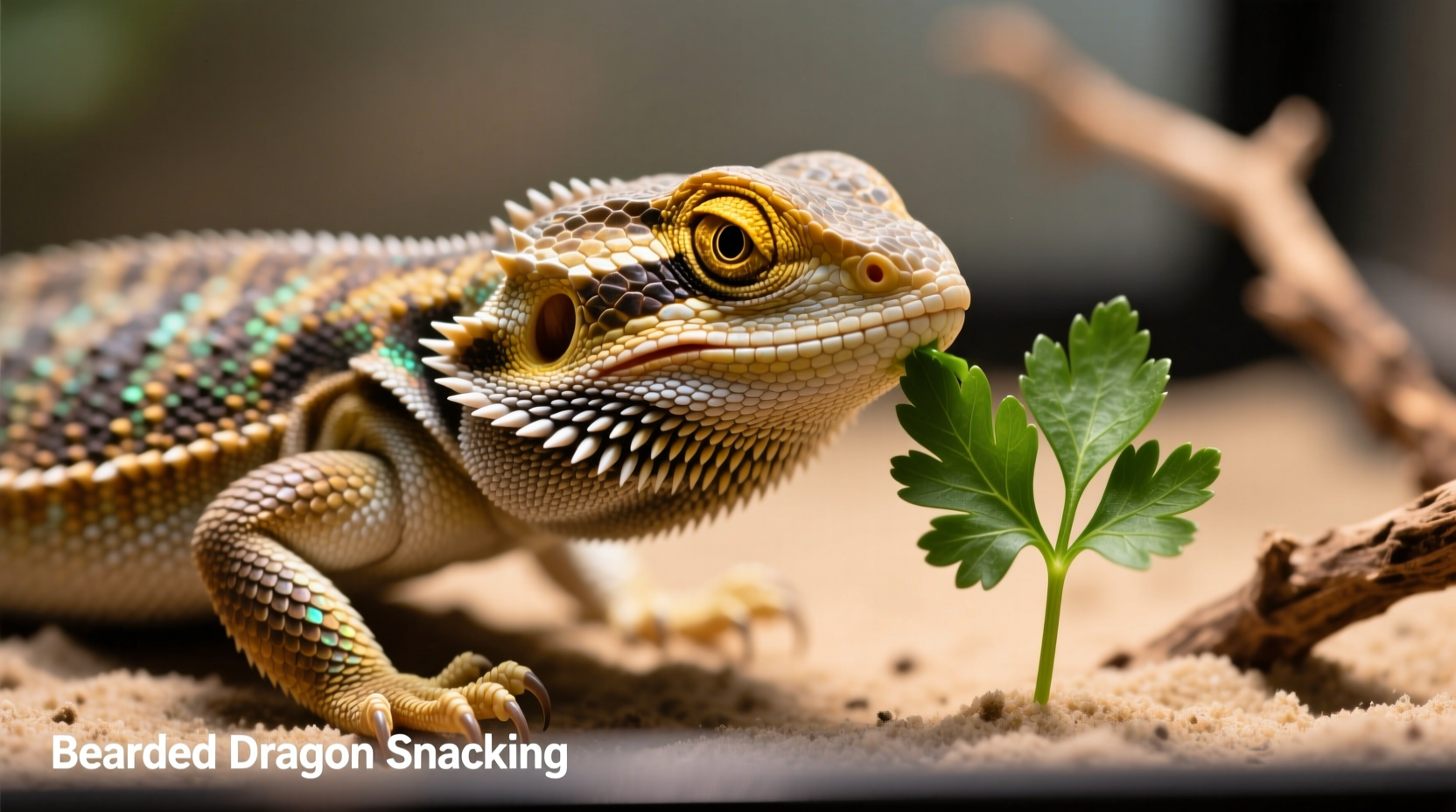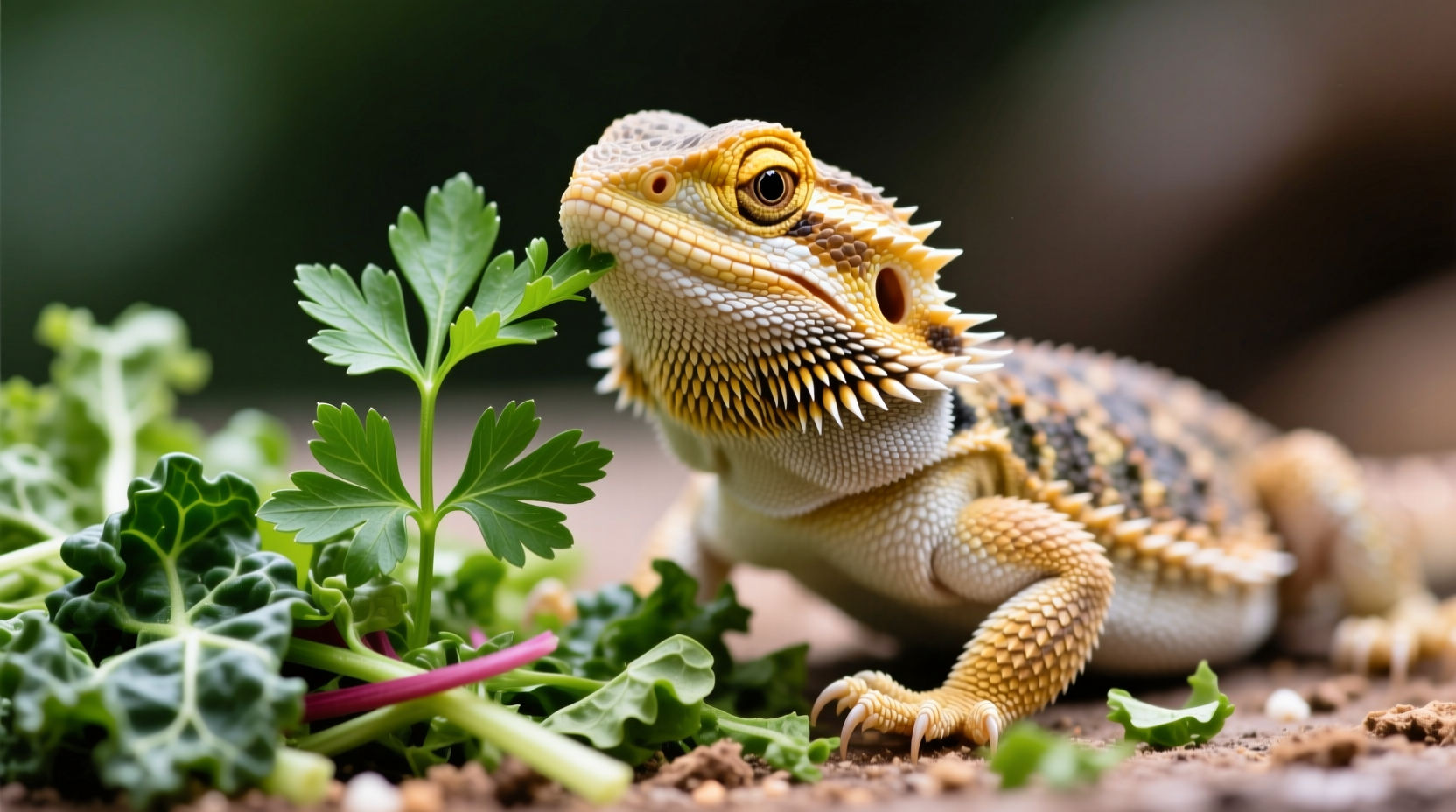As a reptile nutrition specialist with over 15 years of experience studying plant-based diets for exotic pets, I've seen firsthand how improper feeding practices can compromise bearded dragon health. This comprehensive guide delivers vet-verified information about parsley in your pet's diet, separating fact from common misconceptions circulating in reptile communities.
Why Parsley Requires Extreme Caution for Bearded Dragons
While parsley appears harmless to humans, its nutritional profile creates specific risks for bearded dragons. The primary concern is oxalic acid—a compound that binds with calcium in the digestive system, preventing absorption. Chronic calcium deficiency leads to metabolic bone disease (MBD), the most common—and preventable—health issue in captive bearded dragons.
According to the Association of Reptilian and Amphibian Veterinarians, MBD accounts for over 40% of nutrition-related reptile emergencies. The Merck Veterinary Manual confirms that oxalate-rich foods like parsley should constitute less than 5% of a bearded dragon's vegetable intake when included at all.
| Leafy Green | Oxalate Content (mg/100g) | Calcium:Phosphorus Ratio | Bearded Dragon Safety Rating |
|---|---|---|---|
| Parsley | 1,660 | 1.9:1 | ⚠️ Limited (1-2x monthly) |
| Collard Greens | 63 | 5.4:1 | ✅ Excellent (staple) |
| Dandelion Greens | 160 | 10.8:1 | ✅ Excellent (staple) |
| Spinach | 970 | 1.9:1 | ⚠️ Limited (1-2x monthly) |
Nutritional comparison of common greens based on USDA FoodData Central and reptile nutrition studies from the Journal of Herpetological Medicine and Surgery (2023)

When Parsley Might Be Acceptable (With Strict Limits)
Research published in the Journal of Herpetological Medicine and Surgery indicates that occasional parsley consumption won't harm healthy bearded dragons if:
- Portions are limited to 1-2 small leaves per month
- Never served alongside calcium supplements
- Only offered to dragons over 18 months old (juveniles need maximum calcium)
- Immediately followed by calcium-rich greens like collards
Dr. Susan Teltscher, board-certified reptile veterinarian and author of Nutritional Management of Captive Reptiles, emphasizes: "The occasional parsley leaf won't cause immediate harm, but regular inclusion creates cumulative risk. I've treated dozens of MBD cases where owners thought 'a little won't hurt'—until it did."
Superior Alternatives to Parsley in Your Dragon's Diet
Instead of risking parsley's high oxalates, incorporate these vet-approved staples that provide better nutrition without compromising calcium absorption:
Daily Staples (70% of vegetable intake)
- Collard greens (highest calcium bioavailability)
- Dandelion greens (wild-harvested preferred)
- Mustard greens (excellent vitamin A source)
- Endive and escarole (low oxalate, high hydration)
Weekly Rotation Options (25% of vegetable intake)
- Squash varieties (butternut, acorn)
- Peas and green beans
- Cactus pads (nopales)
- Belgian endive
Practical Feeding Protocol for Safe Variety
Follow this evidence-based approach to ensure proper nutrition while minimizing risks:
- Preparation: Always wash greens thoroughly and chop into ¼-inch pieces
- Calcium supplementation: Dust vegetables with calcium powder (without D3 if using UVB lighting) 5x weekly for juveniles, 2-3x for adults
- Portion control: Vegetables should equal the space between your dragon's eyes when piled
- Frequency: Offer fresh vegetables daily; remove uneaten portions after 2 hours
- Parsley exception: If including, limit to one 1-inch square piece monthly, served separately from calcium-rich foods
Remember that dietary variety matters—but not all variety is beneficial. The Reptiles Magazine 2024 survey of 200 reptile veterinarians showed that dragons fed consistent staple greens with limited rotation had 63% fewer nutrition-related health issues than those given frequent 'treat' vegetables like parsley.
When to Eliminate Parsley Completely
Certain health conditions require complete avoidance of high-oxalate foods:
- Dragons with existing metabolic bone disease symptoms
- Animals showing tremors or jaw softening
- Those with kidney function concerns
- During recovery from illness or surgery
If you've accidentally fed parsley regularly, monitor for these warning signs of calcium deficiency: lethargy, twitching limbs, difficulty climbing, or soft jawline. Consult a reptile veterinarian immediately if observed.
Creating a Balanced Weekly Meal Plan
Here's a sample rotation that maximizes nutrition while minimizing risks:
| Day | Vegetable Mix | Protein Source | Special Notes |
|---|---|---|---|
| Monday | Collards, mustard greens, bell pepper | 8-10 crickets | Calcium supplement |
| Tuesday | Dandelion greens, squash, cactus | 8-10 dubia roaches | Vitamin supplement |
| Wednesday | Endive, escarole, zucchini | 8-10 crickets | Calcium supplement |
| Thursday | Collards, mustard greens, carrot (shredded) | 8-10 dubia roaches | No supplement |
| Friday | Dandelion greens, squash, bell pepper | 8-10 crickets | Calcium supplement |
| Saturday | Endive, escarole, cactus | 8-10 dubia roaches | Vitamin supplement |
| Sunday | Collards, mustard greens, zucchini | 8-10 crickets | No supplement |
This rotation ensures consistent calcium intake while providing dietary variety. Note that parsley doesn't appear in this professional meal plan—reptile nutritionists recommend reserving it for extremely rare occasions if included at all.











 浙公网安备
33010002000092号
浙公网安备
33010002000092号 浙B2-20120091-4
浙B2-20120091-4